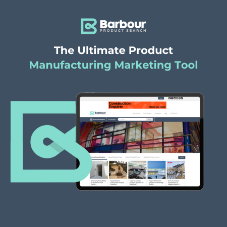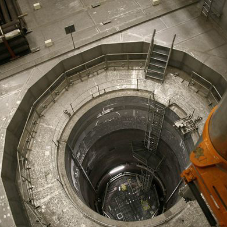When it comes to marketing building products, the construction pipeline and the Decision Making Unit (DMU) present some unique challenges. Yet there are a number of tools at the disposal of the construction marketer, with some marketing tools relatively unique to construction.
Chris Ashworth describes the process of specifier decision making, highlighting the importance of the different forms of content along the construction buyer journey from Awareness to Adoption.
Your building product needs to have good representation across the internet
In a recent study conducted by Competitive Advantage, more than half the architects contacted said that they considered there was sufficient information available online to research products without contacting the manufacturer. Which tells us it is vitally important to have good content available online. That content will be on your website, in third party articles and contained in product directories such as Barbour Product Search. Our research also told us that specifiers do not just stick to one information source, most will use a variety of sources as they seek out information.
How do specifiers learn about your construction products?
We can consider this as representing the classic stages of decision making; Awareness, Interest, Evaluation, Specification, Adoption.

Awareness: At this early stage the architect or engineer does not have a specific project in mind, it is just passive gathering of information. This might be as a result of reading a case study, attending an exhibition, reading a general article or attending a CPD seminar.
Interest: If the information is interesting they think “That’s interesting, I’ll file it”. The filing process might be physical, some architects keep a box file of interesting information, it might be digital or they might just rely on their memory. The important thing is that the information was sufficiently interesting to catch their attention. That means content that introduces a new approach to solving a problem.
Evaluation: Some time later our specifier will be working on a project and be looking for a new approach. This might be because of a change in the Building Regulations, a new or higher performance requirement, in response to a Client or Contractors brief or just to make their building unique. They may recall that Interesting Idea from the past, or ask a colleague (perhaps via social media) for suggestions.
This leads to a more detailed product search, almost certainly via the internet. Now they are wanting more than a concept. They want to find a product which solves specific problems, and then they want to be re-assured that it will do the job. How does it perform? What are the capital cost and operating costs? What track record does the product have and are there guarantees and certification to support this. Information will also be required about system compatibility, sustainability, availability, installers and much more.
If the specifier remembers your brand they may go on your website. But it is more likely that they will conduct a search around one of these terms. This means you need to ensure there are plenty of blog articles posted with the right content. By which I mean content that describe these features in the context of what is probably a technical article. But written in a form that makes publications want to post it. The content must also include a Call To Action (CTA in marketing speak) preferably with a link to your website to download technical data.
Specification: Assuming the specifier finds the information they need and they are ready to specify, they will then require much more detail – Technical Specification, Approvals and all of the other performance criteria. This is not just about providing content which satisfies them that the product is suitable. It is also about presenting the features that other products will have to meet for a sub-contractor to demonstrate that an alternative is equal. Remember a significant proportion of products are likely to be changed during the Stage 2 Concept Design through to Stage 5 Construction (RIBA Plan of Works). The principal source of information will be your website where they will want to download product brochures, technical data sheets and product specifications.
Adoption: If your product is successfully used on the specifier’s project, and you follow-up correctly, then there is a good chance that they will adopt the product for future projects. Our recent research suggests that more than 64% of architects said that more than half of products they specify for a project were used on a previous project.
Your marketing content at each of the stages of the decision-making process must complement the other stages and lead the specifier towards selecting and then adopting your product. It must provide them with the information they need in an easy to use format and be accurate and up to date.
To summarise: You must ensure there is quality information about your products in various locations on the internet; your website, third party publishers and product directories are key examples. The role of these are to initially create awareness and interest, then you need to provide sufficient information for the architect or engineer to evaluate and specify your product. While the content will be tailored for each publication, each must complement the other to provide a clear message which also gives confidence in your brand.
Further information:
Click to download Choosing your Communications Channels Datasheet.
Click to download Developing Technical Product Literature for Construction Datasheet.

Sign up to the Competitive Advantage newsletter for an overview of construction market activity as well as construction sales and marketing advice.
Related Blog Articles



crop192.png)












